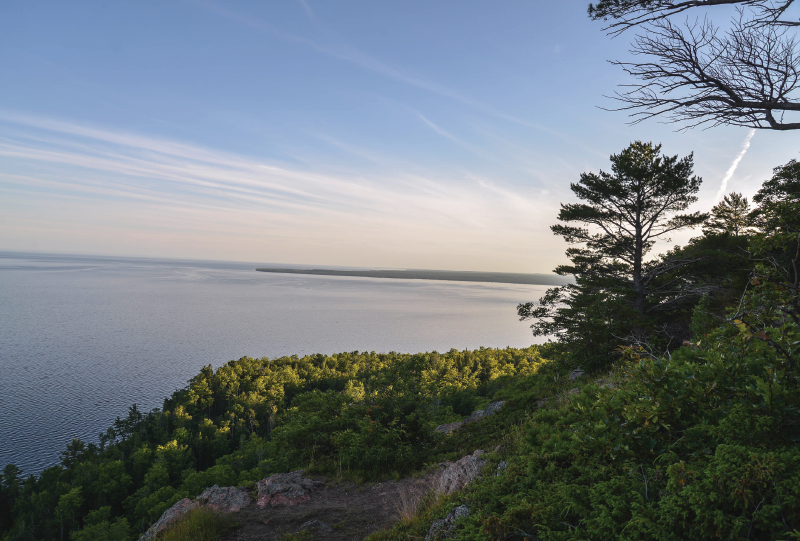
Garrett Johnson often refers to the Michigan Nature Association (MNA) as “Michigan’s best-kept secret.” The 63-years-old Okemos-based non-profit is Michigan’s oldest land conservancy. It stewards more than 170 nature sanctuaries and plant preserves in nearly 60 counties across the state, each dedicated to the preservation of rare, threatened and endangered species.
“We were founded in 1952 by a group of Michigan citizens who were interested in direct action and making a difference,” offers Johnson, MNA’s executive director. “One of the remarkable things about that founding generation is they saw a need to protect critical habitat for rare and endangered species 20 years before the Federal Endangered Species Act passed Congress.
“That’s important today because, as successful as the act has been, one significant shortcoming has been protecting critical lands for species. What those MNA founders did has become increasingly relevant with the passage of time.”
Ranging from less than 40 acres in size to more than 900, MNA sanctuaries harbor a variety of natural treasures. Visitors may find endangered Karner blue butterflies, rare and threatened prairie fringed orchids, even a Massasauga rattlesnake — a species of concern in Michigan and a candidate for federal endangered species listing.
The state’s largest remaining old-growth white pine forest is found in MNA’s Estivant Pines Nature Sanctuary, on the Keweenaw Peninsula, while lush wildflowers thrive in Cass County’s renowned Dowagiac Woods.
Coastal wetlands along the St. Mary’s River — one of the most biologically diverse ecosystems in the Great Lakes region — are preserved in the 942-acre Schafer Family Nature Sanctuary at Roach Point, while the MNA protects a 66-acre grove of American Chestnut trees in Allegan County and sensitive nesting grounds on Gull, Bird and Grass Islands in Lake Huron near Alpena.
Powershiek skipperling butterflies, the most recent Michigan species added to the federal endangered species list, can only be found on eight landscapes in the Great Lakes State, and four of these are MNA properties.
“We like to say ‘you can walk on the results’ of what we do,” shares Johnson, the former director of federal affairs for The Nature Conservancy, in Washington D.C. “We protect rare, threatened and endangered species through a simple method of owning the land. We don’t buy land and flip it to government agencies.
“Our members like our simple focus: owning quality land in Michigan, for Michigan,” he adds. “We’re a homegrown group with a natural appeal and the only statewide land trust based in Michigan.”
PLAYING A ROLE
MNA began as bird study group in the 1950s. It was education-oriented and owned a trailer that volunteers towed to schools for programs. Its leadership shied away from public attention because they feared MNA properties would be “loved to death,” according to Johnson.
Today, MNA has 12 staff and 2,000 members. Many come out for organized work and play events on the properties. Its sanctuaries are purchased outright or are donated by landowners.
MNA received land trust accreditation in 2014 from the Land Trust Accreditation Commission. It is a seal of approval achieved by less than 15 percent of the land trusts in the U.S., Johnson says. The seal assures donors that the organization meets national standards of excellence.
“For many years we were led by volunteers and beneficiaries with extraordinary leadership,” Johnson says. “Those folks built a remarkable network of nature sanctuaries. But in the 2000s, it became clear that protecting them would require hiring staff and building an institution.”
At the same time, “We try to make these lands available for public enjoyment,” he shares. “We have a full slate of hikes planned throughout the year.”
And the involvement of volunteers in multiple capacities remains essential to the MNA’s ability to achieve its goals, from becoming a member ($35 annually) to pulling invasive plants, repairing signs, cleaning up trails and assisting at MNA events.
Emissaries are also being recruited from across the state to raise public awareness by serving as organizational hubs for events, field trips and presentations, while more stewards are especially needed to help monitor and upkeep properties in Alpena, Baraga, Delta, Huron, Jackson and Marquette Counties.
To learn more about MNA nature sanctuaries, plant preserves and volunteer opportunities, visit michigannature.org.
Award-winning writer and BLUE “Undercurrents” columnist Howard Meyerson lives in Grand Rapids.







Facebook Comments